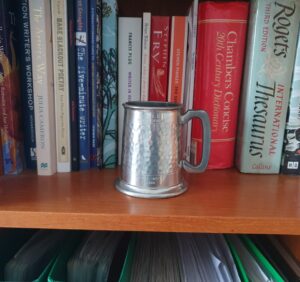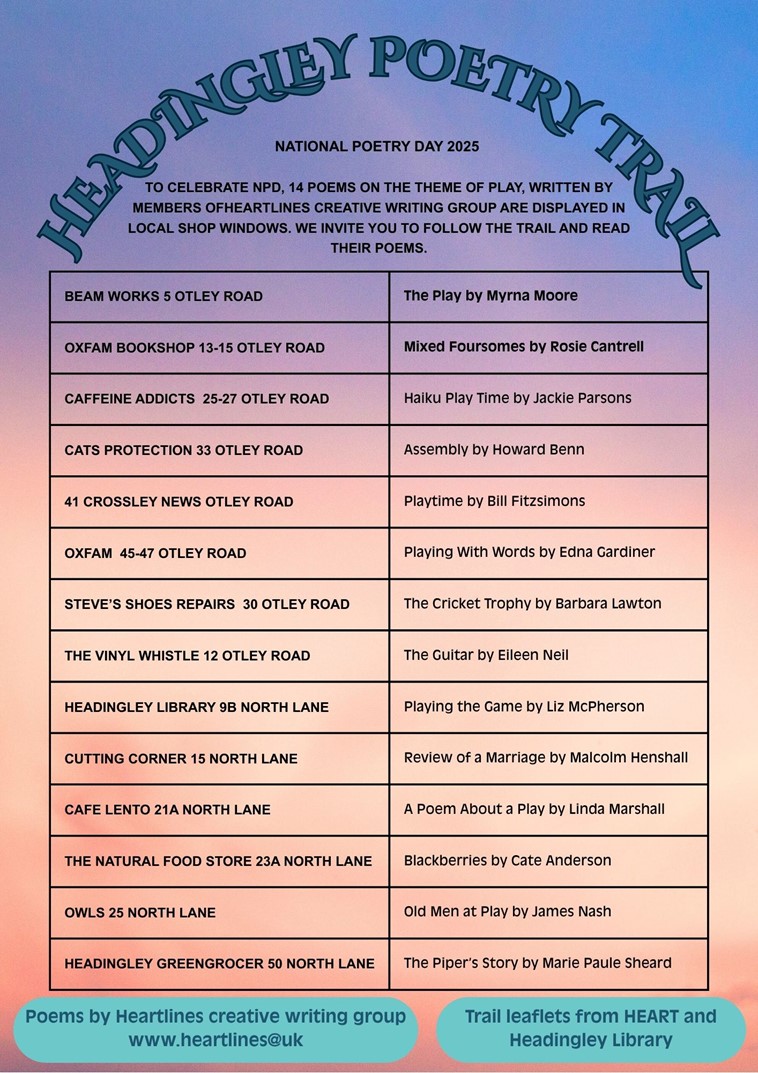The Play
(They say never work with children or animals but…)
If you want to lose a stone in quick time, try putting on a play with an adult –
volunteer cast.
Part 1
The casting obvious, so easy, so far so good
The read- through, hesitant and shy of each other mostly, but there’s always one
who likes to boast and show- boat.
But anyway, so far so good…mostly.
Part 2
Learn the lines
Make them fit
Yes, with your character not someone you saw in a pantomime once on the telly, on a stage somewhere. Oh, and yes, you do need to come to rehearsals now you know your lines.
Deep breaths all round.
Big breath
In hold 10 seconds
Out exhale 10 seconds and repeat until…
Two months later
So far, I have lost 8 pounds and quite a bit of sleep, but it goes with the territory, doesn’t it?
Managed without one of the main characters again – male or female.
Had a wedding
Funeral /wake
Leaving do
Birthday
Football match to attend
Or simply forgot.
Pulling, twisting, shaping – coming together for the most part, I think.
Technicals Tick
Sound Tick
Costumes Tick
Suggestions aplenty from the cast and just about any unqualified passer-by. All gratefully received except for:
Why must the break, the interval, be here on page 52, why not have it after page 45?
Now forgetting the deep breaths
I have put it there because…but why am I even explaining the process, artistic
reasons for putting it there? NO, no we go with it there, decisive me speaks
Part 3 Dress Rehearsal
Now lost 12 pounds. Doing well managing on 4 hours sleep a night.
Take:
Costumes
Props
Stage furniture
Lots of deep breaths and a beatific – plastered -on -smile
Oh, and nearly forgot, mustn’t forget to pick a member of cast up, on the way, because she doesn’t see why she needs to be there all day.
Act 1
So far, so good until
Cue lights, cue sound
Empty stage
Why?
Why for pity’s sake?
Getting changed… of course
And again
Cue lights
Cue sound
Enter…oops
Forgotten lines, forgotten lines
But the youngest knows his lines and is ruling the stage. Waited so long for this
moment.
I’m there I’ve nearly lost a stone
I shout
Empty stage again, and again until I’m hoarse
Break, yes, let’s take a break.
Paralysed
Thirsty, yet cannot drink
Head throbbing, reeling
Heart thumping, no time for deep breaths 123
Full house tonight
Will the audience demand their money back?
Will they kiss their teeth?
Will they walk out?
Part 4 Final phase
Later
Costumes
Props
Exits /Entrances clear
Stage furniture
Everything in place
Pep talk over.
It’s over to you…break a leg, second thoughts maybe not, it’s in your hands now
What’s that, someone without tickets? Didn’t expect to pay because their son /daughter is in it etc. etc.
YES, give them a ticket we’ll pay.
Let’s just get going.
I’ll sit at the back and pray
House lights down
Stage lights up
Cue sound
No empty stage
So far so good
The youngest rocks the stage
The audience rocks with laughter
The first shall be last and the last first.
They all up their game.
I have lost a stone!
Well done cast and crew, you were mag ni fi cent!
123 exhale and smile.

 I doubt if anyone’s drunk from this vessel
I doubt if anyone’s drunk from this vessel To celebrate National Poetry Day 2025, poems written by members of Heartlines Creative Writers on this year’s theme of ‘PLAY’ will be displayed in café and shop windows around Headingley. A list of venues displaying poems can be obtained from Headingley Library and Heart Enterprise & Arts Centre, and below, and people are invited to follow the ‘Trail’. You can also download a copy of the Trail here. More poems can be found in Heart’s café bar, so that’s a good place to start or end your visit to the Headingley Poetry Trail. If you can’t follow the Trail round Headingley, you’ll be able to read the poems on our website in October.
To celebrate National Poetry Day 2025, poems written by members of Heartlines Creative Writers on this year’s theme of ‘PLAY’ will be displayed in café and shop windows around Headingley. A list of venues displaying poems can be obtained from Headingley Library and Heart Enterprise & Arts Centre, and below, and people are invited to follow the ‘Trail’. You can also download a copy of the Trail here. More poems can be found in Heart’s café bar, so that’s a good place to start or end your visit to the Headingley Poetry Trail. If you can’t follow the Trail round Headingley, you’ll be able to read the poems on our website in October.